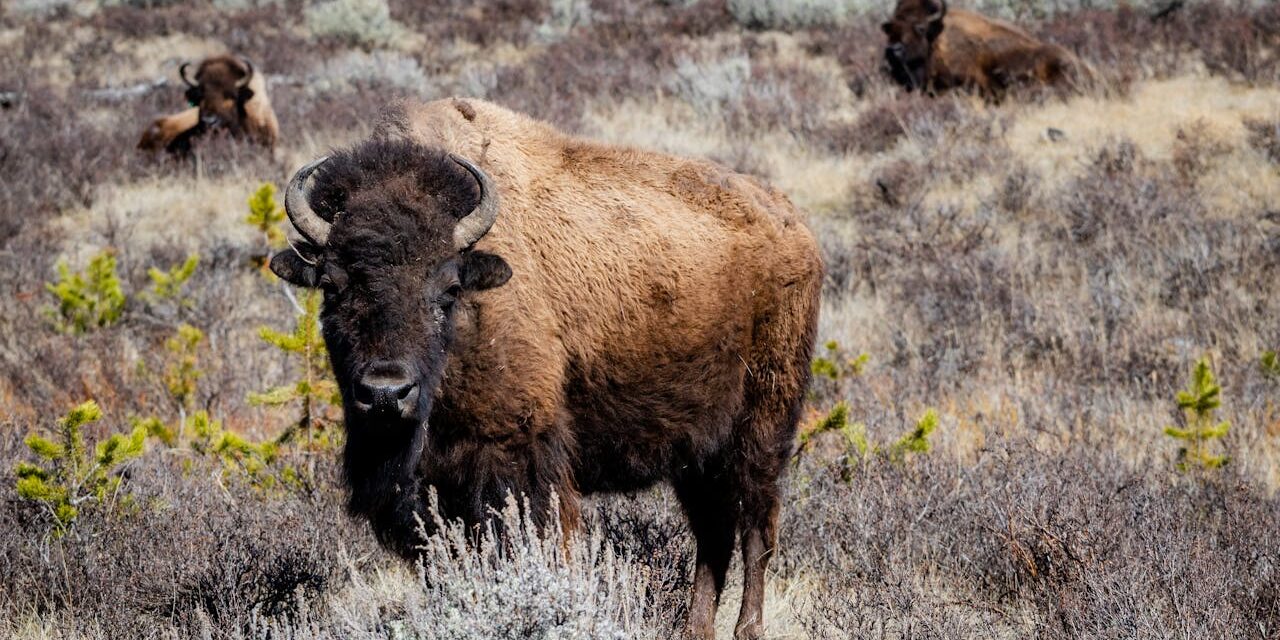Wyoming, known as the “Equality State,” has a rich and varied history that encompasses its Native American heritage, European exploration, and significant events in American history.
From the early indigenous tribes to its development as a key state in the American West, Wyoming’s past is a compelling tale of exploration, settlement, and growth.
Below, we explore the history of Wyoming, highlighting its foundation, major historical events, and notable landmarks.
Table of Contents
Early History
Indigenous Inhabitants and European Exploration
Before European settlers arrived, Wyoming was home to various Native American tribes, including the Arapaho, Cheyenne, Crow, Shoshone, and Sioux.
- These tribes developed complex societies with rich cultural traditions, relying on hunting, gathering, and trading.
- European exploration started to occur and began in the 18th century with French and Spanish explorers, followed by American explorers such as John Colter and Jim Bridger in the early 19th century.
The indigenous peoples and early European explorers laid the groundwork for future settlements in Wyoming.
Territorial Period and Settlement
Wyoming became part of the United States through the Louisiana Purchase in 1803 and later through various treaties with Native American tribes.
- The Oregon Trail, which passed through Wyoming, brought many settlers to the region in the mid-19th century.
- Wyoming Territory was officially established on July 25, 1868, paving the way for increased settlement and development.
These developments were crucial in shaping Wyoming’s demographic and cultural landscape.
Key Historical Events
Statehood and Early Development
Wyoming was admitted to the Union as the 44th state on July 10, 1890.
- Early economic activities included ranching, mining, and the development of the Union Pacific Railroad, which played a crucial role in the state’s growth.
Statehood marked a new era of political and economic growth for Wyoming.
Women’s Suffrage and Political Progress
Wyoming was the first territory and later the first state to grant women the right to vote in 1869 and 1890, respectively.
- This progressive stance on women’s rights earned Wyoming the nickname “The Equality State.”
- The state’s commitment to equality extended beyond voting, with women serving in various political and judicial roles.
Wyoming’s early adoption of women’s suffrage is a significant aspect of its history.
Development of National Parks
Wyoming is home to several iconic national parks, including Yellowstone National Park, established in 1872 as the first national park in the world.
- Grand Teton National Park, created and established in 1929, is another major landmark known for its stunning mountain scenery and wildlife.
- These parks are what attract millions of visitors annually and are vital to Wyoming’s tourism industry.
The establishment of national parks has been a cornerstone of Wyoming’s environmental and economic strategy.
Modern Developments
In recent decades, Wyoming has continued to grow and diversify its economy, with significant contributions from the energy sector, particularly coal, oil, and natural gas.
- The state also maintains a strong tourism industry, capitalizing on its natural beauty and outdoor recreational opportunities.
Modern Wyoming balances its rich historical heritage with contemporary economic advancements.
Notable Landmarks
Yellowstone National Park
Yellowstone, the world’s first national park, is renowned for its geothermal features, including Old Faithful geyser, as well as its diverse and incredible wildlife and breathtaking landscapes.
- The park spans and covers over 2 million acres and offers numerous recreational opportunities such as hiking, camping, and wildlife viewing.
Yellowstone National Park is a symbol of Wyoming’s natural heritage.
Grand Teton National Park
This park features the majestic Teton Range and offers a variety of outdoor activities for the general public, including hiking, mountaineering, and boating on Jackson Lake.
- The park’s stunning scenery and abundant wildlife make it a major draw for tourists.
Grand Teton National Park showcases the rugged beauty of Wyoming.
Devils Tower National Monument
Designated as the first national monument set aside in 1906, Devils Tower is a striking geologic formation that rises dramatically from the surrounding landscape.
- The site holds cultural significance for Native American tribes and is a popular destination for climbers and sightseers.
Devils Tower National Monument highlights Wyoming’s geological wonders.
Fort Laramie National Historic Site
Originally a fur trading post, Fort Laramie became a significant military outpost in the 19th century, playing a crucial role and central place in the westward expansion.
- The site preserves numerous historic buildings and artifacts, offering insights into the military and pioneer history of the region.
Fort Laramie is a key historical landmark in Wyoming’s story.
Governance
State Government
Wyoming operates under a constitution adopted in 1889.
- The state government consists of the Executive, Legislative, and Judicial branches.
- The governor, currently Mark Gordon, leads the executive branch.
The state government addresses the needs of Wyoming’s diverse population and manages its resources effectively.
Local Government
Wyoming’s local government structure includes counties, cities, and towns.
- Each level of government has specific responsibilities for services such as education, public safety, and infrastructure.
- Local governance ensures that the diverse needs of Wyoming’s communities are met.
Effective local governance contributes to the overall well-being of the state’s residents.
Demographics and Growth
Population
As of 2023, Wyoming’s population was approximately 580,000. The state’s demographic makeup reflects its history of European settlement, with significant portions of the population of German, Irish, and English descent.
Diverse demographics and steady growth reflect Wyoming’s appeal as a place to live and work.
Education and Economy
Wyoming is home to several prominent educational institutions, including the University of Wyoming.
- The state’s economy is traditionally based on industries such as energy, agriculture, and tourism.
- Wyoming also has a growing interest in renewable energy and technology sectors.
These factors contribute to the state’s economic resilience and cultural vibrancy.
State of Wyoming Q&A
Q: When did Wyoming become a state?
A: Wyoming was admitted to the Union as the 44th state on July 10, 1890.
Q: Who were the original inhabitants of Wyoming?
A: The original inhabitants of Wyoming included various Native American tribes that were there first such as the Arapaho, Cheyenne, Crow, Shoshone, and Sioux. These tribes had rich cultures and established societies with extensive trade networks.
Q: What significant role did Wyoming play in American history?
A: Wyoming played a crucial role in American history as the first state to grant women the right to vote in 1869, reflecting its progressive stance on equality. The state also became a major hub for the westward expansion and development of national parks.
Q: What are some notable historical landmarks in Wyoming?
A: Notable landmarks include Yellowstone National Park, Grand Teton National Park, Devils Tower National Monument, and Fort Laramie National Historic Site. These sites highlight Wyoming’s natural beauty, geological wonders, and historical significance.
Q: How is Wyoming governed?
A: Wyoming operates under a constitution adopted in 1889, with an Executive, Legislative, and Judicial branch. The governor leads the executive branch, and local governance is managed by counties, cities, and towns.
Q: What is the current population of Wyoming?
A: As of 2023, Wyoming’s population was approximately 580,000. The state continues to attract residents with its diverse culture, educational opportunities, and economic resilience.
Wyoming’s rich history and commitment to cultural preservation make it a unique and vibrant state. By protecting its historical landmarks and fostering growth across various industries, Wyoming honors its past while looking forward to a prosperous future.





